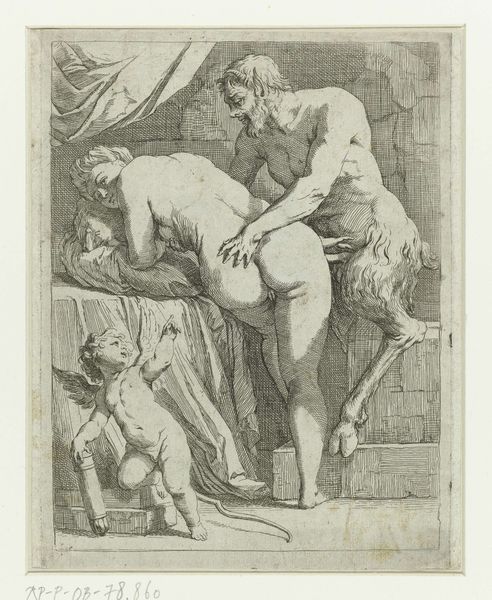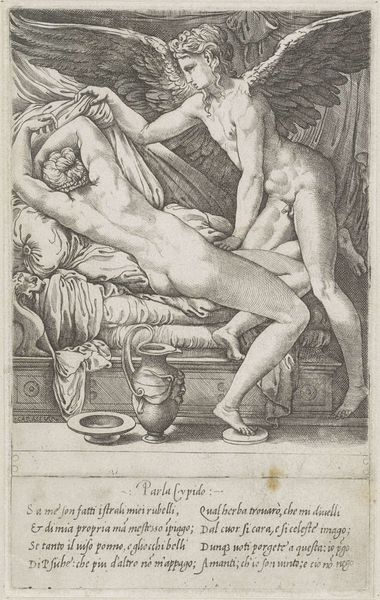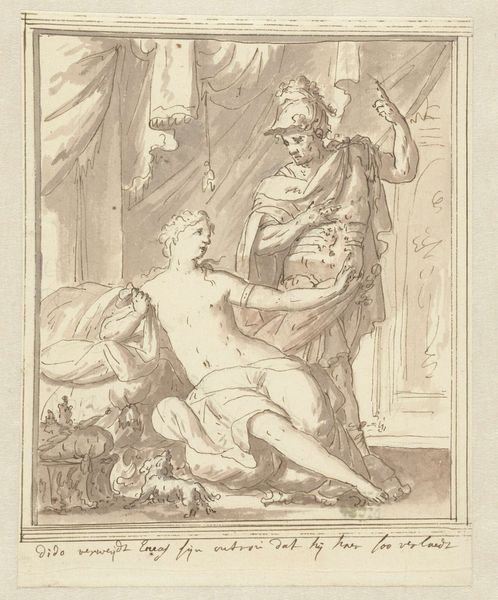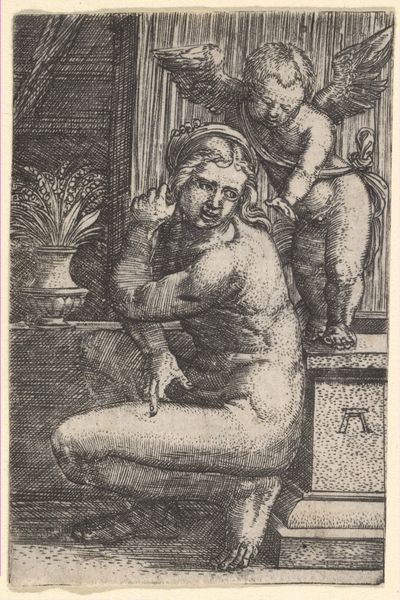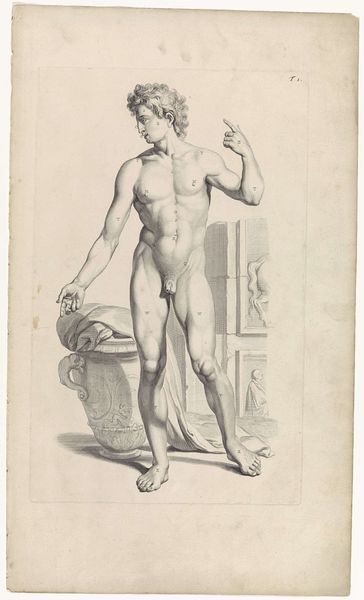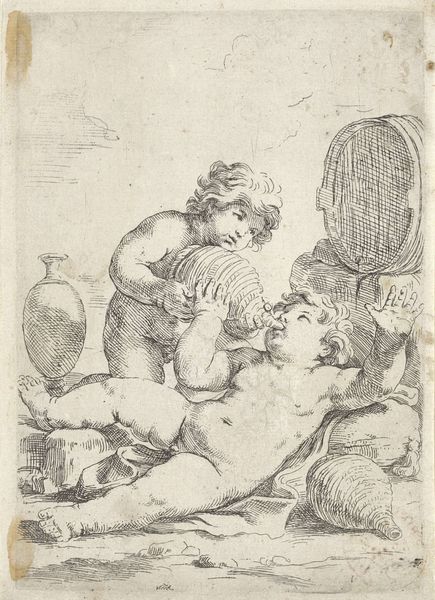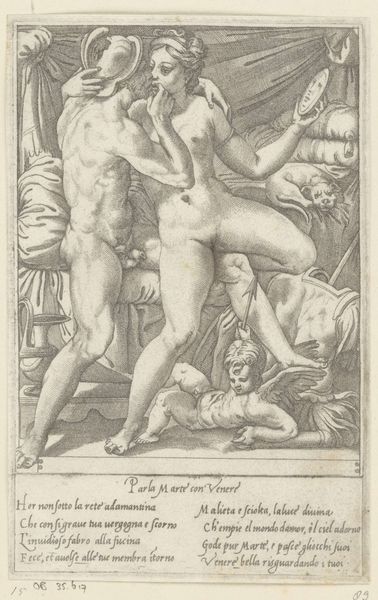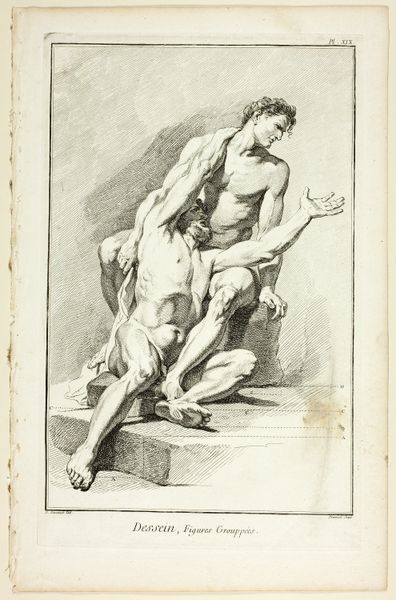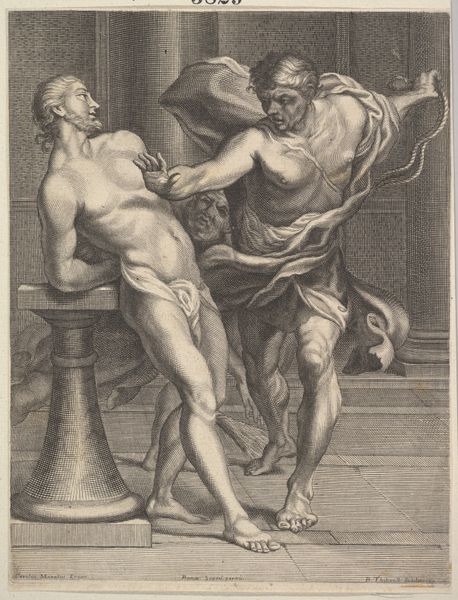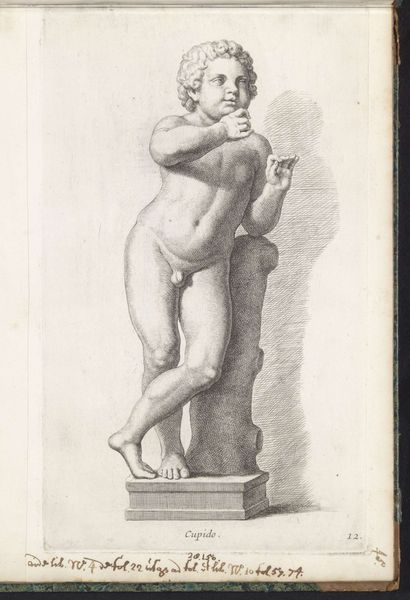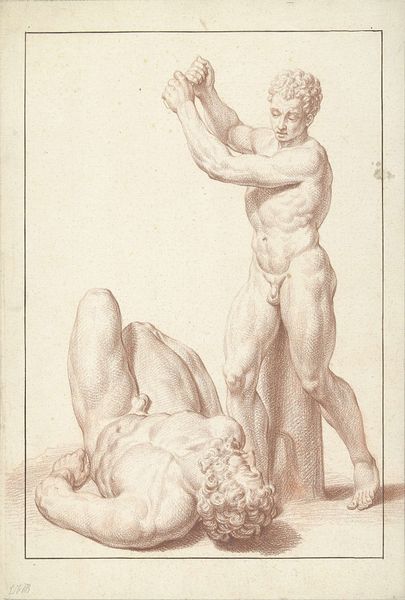
drawing, paper, pencil
#
drawing
#
pencil sketch
#
figuration
#
paper
#
form
#
pencil
#
line
#
portrait drawing
#
history-painting
#
northern-renaissance
#
nude
Dimensions: height 155 mm, width 99 mm
Copyright: Rijks Museum: Open Domain
Editor: Here we have Moses ter Borch’s “Venus, Amor en Mars” from 1660, a pencil drawing on paper currently held at the Rijksmuseum. It’s a classical scene rendered with such delicate lines... There’s an incredible balance of light and shadow created just with pencil. What compositional elements stand out to you? Curator: Immediately, the curvilinear forms contrast against the stark architectural geometry. Observe how the column’s rigid verticality is offset by Venus's reclining pose. Also note how the light falls; see how it sculpts their bodies, especially the shadowing along Venus’s back and the drapery around Mars. What does this interplay of light and form suggest to you about the artist's intentions? Editor: It almost feels like the bodies are the architecture – so intertwined within their setting, perhaps representing love and war's inescapable union? How do you think the line quality affects the drawing’s overall aesthetic? Curator: Indeed. And regarding line quality, consider its role in defining shape and texture. Ter Borch’s light, feathery strokes create a sense of volume and softness, contrasting the hardness we might expect from a scene depicting the god of war. Further, this approach softens the classical narrative with human touch, achieving delicate sensuality, wouldn't you agree? Editor: Absolutely. I'm fascinated by how the lines themselves convey so much— the shading, the texture, the emotion! Curator: It highlights how fundamental elements – line, form, light – carry expressive weight, beyond mere representational function. It is the essence of visual communication. Editor: It's amazing how the formal elements can really shape how you understand a work. I definitely see this piece differently now.
Comments
No comments
Be the first to comment and join the conversation on the ultimate creative platform.
